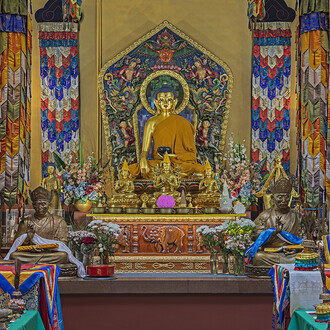In winter 2017 the Moscow Museum of Modern Art is launching its Education Center to bring together all already-existing initiatives of the museum such as the lecture program, the library, the multimedia library and the art classes for children. The projects unfolding on two floors of the museum building at 17 Eromolayevsky Lane continue the museum’s exhibition practices giving them a new turn: the third floor features MMOMA’s collection while the fourth floor has become home to an experimental year-long project titled «Space for Art», produced in partnership with the Goethe-Institut in Moscow.
The project aims to reflect on current changes in the functioning of contemporary art in Russia and Germany by analyzing new forms of artistic practices and collaborations, the developing economic conditions in which institutions, artists and curators operate and these actors’ sensitivity to the political climate. Today in both countries the role of museums extends beyond the preservation of cultural legacy to include providing a platform for experimentation and the creation of state-of-the-art practices. The barriers between institutionalized and independent art are becoming more and more blurred.
The German system of art institutions functioning across different levels is of both theoretical and practical interest. Its artistic scene is shaped not only by internationally renowned artists and influential museums but also by the proliferation of independent self-organizing non-commercial organizations. The artistic landscape is in a process of dynamic transformation, which allows such grassroots initiatives to influence the future agenda of museums. The «Space for Art» experimental project conceived and realized through the joint efforts of the Goethe-Institut in Moscow and MMOMA aims to develop and diversify inter-institutional dialogue and create a platform free of the usual institutional restrictions.
Running from December 15th 2017 to the end of 2018, the project occupies the museum’s fourth floor transforming it into a laboratory for exhibition and research for four invited independent art organizations from Germany, which will succeed each other in presenting their programs. Based on research conducted in Moscow, which involved close collaboration with local artists and theorists, these programs will introduce Moscow audiences to the methods and themes characteristic of these different organizations. Departing from the principles of static presentation common to museums, these exhibitions — enriched with performances, screenings and discussions — will evolve over time. The project not only acquaints viewers with particular artistic spaces from different regions of Germany but also brings out the principles of their functioning and organization.
The exhibitions presented by the four organizations share the theme of self-organization, picking up on its different aspects related to its functioning principles, financing, and how those involved cooperate with other actors within the artistic environment. The project organizers invited artistic spaces varying in organizational form, financing and programming in the hope that their experience may be adapted to the local scene. Since in the current socio-political climate self-organization skills are increasingly in demand, the focus of the project makes it attractive for both professionals and the general public.
Simultanhalle — Raum für zeitgenössische Kunst is a project space situated on the outskirts of Cologne, Germany. The building it occupies was erected by the architects Busmann + Haberer and intended to serve as an architectural model for the Museum Ludwig. Initially scheduled to be demolished, the building was preserved thanks to the efforts of Czech-born artist Eva Janošková who in 1983 started to organize there exhibitions for fellow artists. Since then, it has functioned as a project space with regular programing.
Simultanhalle’s exhibition program is formed by the curatorial council — a team of artists and theoreticians with frequently changing membership — and largely defined by the architecture of the building. Similar to its space, which represents a model, Simultanhalle’s program is infused with the spirit of experimentation and reflects the diversity of tastes and interests of its participants.
Simultanhalle’s three-month-long project in MMOMA consists of three phases which articulate the principles of its functioning and organization. The stage in the original space in Cologne and its archive, which are reproduced in MMOMA, serve to tell the history of its past exhibitions and demonstrate the space’s specific artistic and curatorial methods.
D21was founded in 2006 with the aim of establishing an artistic space specializing in new media, photography, installation, performance and video. In the same year the organization managed to open its own space in the district of Lindau in Leipzig.
The D21 exhibition space serves as a platform for artistic and curatorial experiments. Every year it changes the focus of its program which usually consists of five exhibitions. The organization also participates in festivals and important large-scale events. Representatives of various professions, students and cultural producers are involved in D21’s activities on a voluntary basis.
Founded in 2009 and based in the former malt plant Malzfabrik, District offers an interdisciplinary space for the collaborative intersection of art and other fields of knowledge. An important focus of District’s cultural program is the contextualization of contemporary artistic practice in urban space and local communities.
District is a place where concerns, critique and ideas can be expressed and negotiated. Artistic experimentation and research is here linked with the effort to create environments which can accommodate different modes of engagement with necessary change towards more sustainable and fairer ways of living. Collaborating with local and international cultural producers, other organisations and different audiences, District produces exhibitions, discursive and performative events as well as educational activities. Through the studio grant for women artists and the studio program for young cultural producers, District builds a support structure for artists. Dedicated to experimentation as a mode of knowledge production, District endeavors to cultivate space for the unexpected and the paradoxical.












